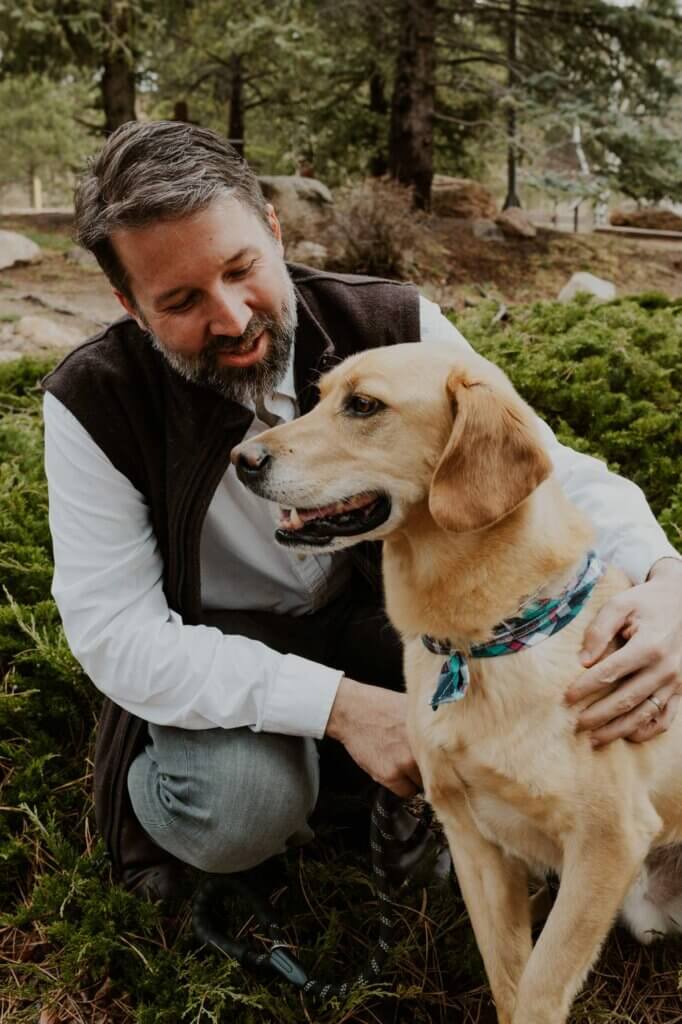Defining the Aging Pet

What is it about getting older that makes us all just a bit more… fragile? You’ve likely heard the common refrain, age isn’t a disease, but many of us have also internalized the idea of dying from old age if not from “natural causes,” whatever that means. So which is it? Is it a disease process or not? And if not, why does it bring so much disease in its wake? When we look at our dog or cat with the graying muzzle who suddenly has so many issues where for so long there were none, we can’t help but ask, what changed? The nuts and bolts of this answer are stunningly complicated and even now our collective understanding of all of the mechanisms involved are limited. But the broad answer can be distilled into two distinct facets of the body: renewal and accumulation.
Renewal: We spend much of our adult lives taking our body’s ability to regenerate for granted. Everything from our muscles’ ability to regenerate after being broken down to our immune systems’ constant turnover of cells; it all happens so seamlessly that we barely take notice until those systems start to slow. When they do, torn muscle fibers are slower to reconnect, immune responses are slower to respond or less effective and our ability to navigate through the world just feels compromised in some way.
Many of us are familiar with embryonic stem cells, the primordial goo that gives us all of our parts. But did you know that beyond fetal development, all animals also have adult stem cells that are responsible for the constant turnover that heals you when you’re injured or just maintains organs through the normal wear and tear of everyday life? It’s a lot like a copy machine, elegant in its results, but not without its eventual failings. Like that office copier, it cannot run forever. In time we all run out of toner (to say nothing of the printer jams). And as that system slows, our body and the bodies of our pets no longer respond or adapt to adversity with the same vigor. The end result is that the necessary copies are both slower in function and more prone to error in the duplication effort. This is why we associate a higher risk of cancer with advanced age and one of the reasons why we see so much of it in our aging pets.
Accumulation: Renewal only applies to part of the body. There are some parts that are never renewed, regardless of age. The heart muscle, the intricate machinery of the kidneys or the cartilaginous padding of our joints are all examples of you get what you get. Injury to such places often results in loss of the functional component through accumulation of unwanted material. Often this accumulation is in the form of fibrosis (think scar tissue). A damaged heart cannot replace the heart muscle with more muscle, but something is still required to keep all of the pieces together. This can happen in the kidneys as well, but years of inflammation can also lead to the accumulation of immune complexes that grime up the kidney’s filters, a common problem for our kitties. And whether it’s us or our dogs, protein plaques can accumulate through the years within the neurons of our brains leading to cognitive decline. Accumulation of too many cell layers within the lenses of our pets eyes can cause clouding and sensory loss. Fibrotic fibers in the lungs can reduce air flow capacity. The list goes on and on.
Our bodies and the bodies of our animals are so resilient. They can take an extraordinary amount of damage below a certain threshold and still maintain their critical functions. However, injury after injury adds up. The scar tissue adds up. That accumulation, given time, crosses the line of resiliency and begins to introduce problems.
As Dr. Kelly and I get older, we’re having to consider lifestyle changes that we’re not always excited about. Workout routines I used to be able to do when I was younger might put me in traction today. What we eat requires a bit more consideration now than when we were in our devil may care 20s. We make these adjustments in order to address these unavoidable changes in our bodies. Luckily most of us have decades to adjust to some of our new “requirements.”
Our animals age so much faster than we do. Often it feels as though the adult to senior transition happens over months rather than years. It doesn’t give us the time we need to appropriately adjust for their new life requirements. Not without help. The plans we come up with at White Whiskers are designed to make some of these less than comfortable adjustments as easy as they can possibly be for both you and your animal. Unfortunately, none of us can stop the aging process. But White Whiskers can help slow it and make those senior years as comfortable as possible. Give us a call for your old timer today.
White Whiskers Aging Pet Care provides in-home veterinarian services, including senior pet care, quality-of-life consultations, and pet home euthanasia. Our mobile veterinarian provides compassionate care and peaceful passings for cats and dogs in Colorado Springs, Peyton, Black Forest, Monument, Fountain, Manitou Springs, Woodland Park, Falcon, Palmer Lake, Calhan, Pueblo, and surrounding areas.
